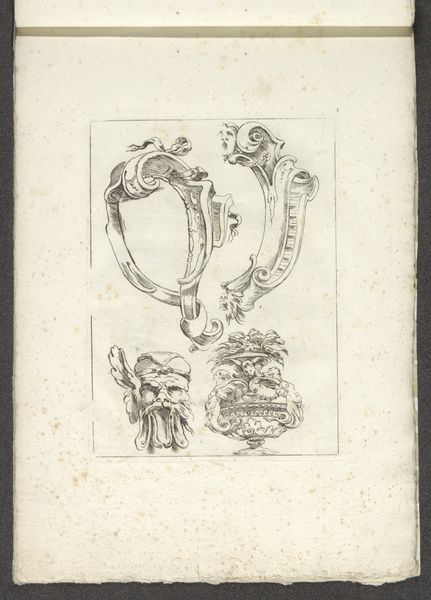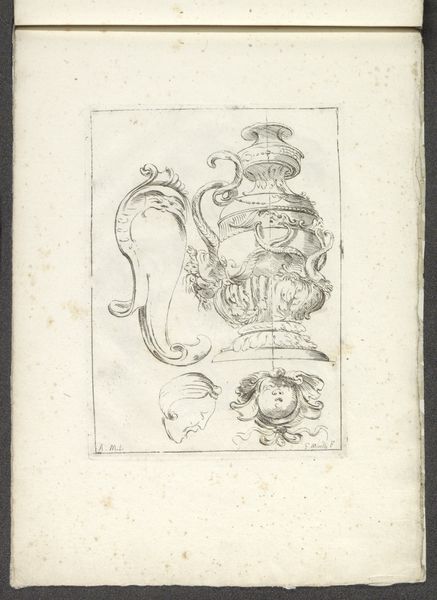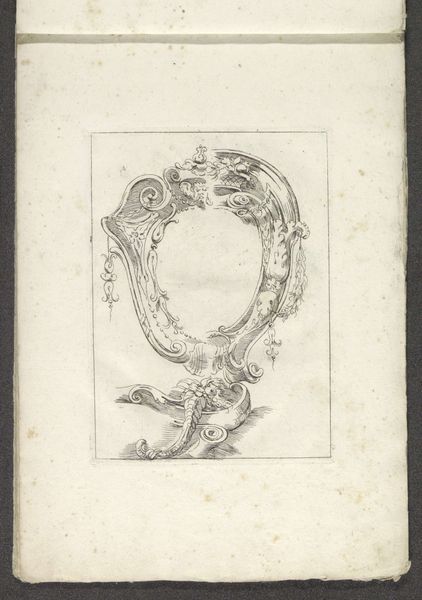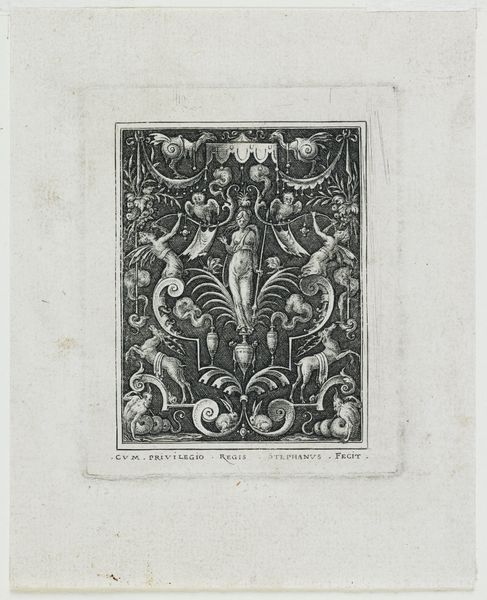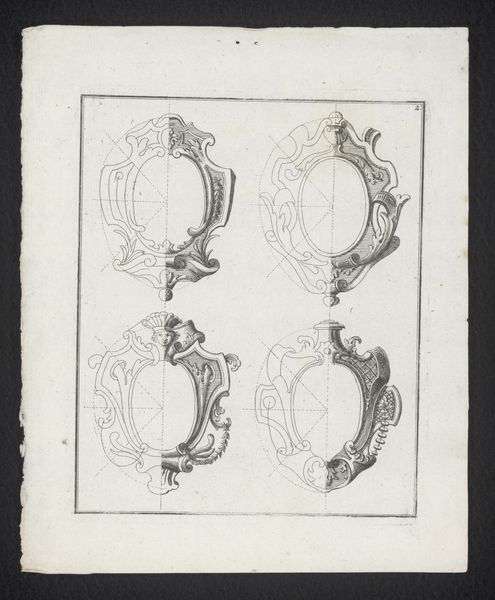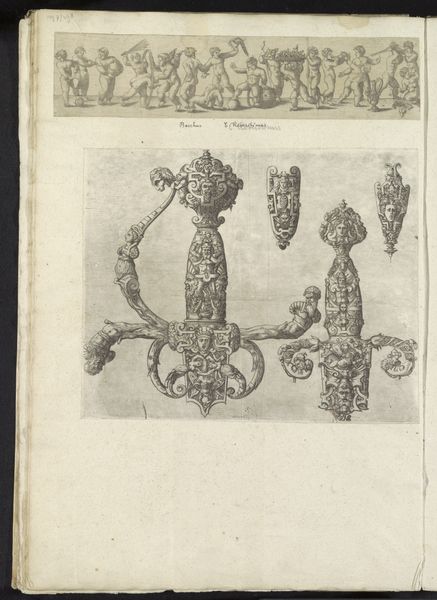
Console met vaas, cartouche en details van ornamenten 1644 - 1718
0:00
0:00
giuseppemariamitelli
Rijksmuseum
drawing, ink, pen
#
drawing
#
aged paper
#
toned paper
#
quirky sketch
#
baroque
#
sketch book
#
figuration
#
form
#
personal sketchbook
#
ink
#
ink drawing experimentation
#
pen-ink sketch
#
ink colored
#
line
#
sketchbook drawing
#
pen
#
history-painting
#
academic-art
#
sketchbook art
Dimensions: height 189 mm, width 136 mm
Copyright: Rijks Museum: Open Domain
Editor: Here we have "Console met vaas, cartouche en details van ornamenten," a pen and ink drawing dating from around 1644 to 1718, by Giuseppe Maria Mitelli. It feels very immediate, like a peek into the artist's process. What do you make of these sketched ornamental details? Curator: I'm immediately drawn to the *means* of its production. This isn't about some ethereal beauty, it’s about the labor, the material conditions behind ornate objects. Mitelli, using pen and ink, a relatively accessible medium, meticulously reproduces designs likely destined for much more opulent execution. Editor: Opulent, how so? Curator: Imagine these sketches translated into carved wood, gilded, part of an aristocratic household...Mitelli’s drawing highlights the process. Consider the material journey – from the artist's hand rendering the idea on paper to a craftsman shaping expensive materials for a wealthy patron. It's a chain of labor and consumption, each step embedding social meaning. Does that perspective shift how you view it? Editor: It does! I was initially focused on the style itself – the Baroque flourishes and historical context – but considering it as part of a larger production chain makes me see it differently. It’s not just a pretty sketch, it’s a record of artistic labor feeding into a system of material culture. Curator: Exactly! And notice how accessible pen and ink were; what does it say about class and craftsmanship when translated into expensive materials like gold? Editor: This perspective really complicates my understanding of the work, but it is definitely an intriguing aspect to examine further. Curator: It adds a dimension, doesn't it? Thinking about the socio-economic web tied into every material choice makes it more tangible and really challenges traditional views about who gets to access beauty and how they do it.
Comments
No comments
Be the first to comment and join the conversation on the ultimate creative platform.
